Filling the Gap: AMOLED and LCD from 2010 to 2012
by Joshua Ho on July 26, 2014 6:00 AM ESTHTC Rezound
The Rezound is one of the last devices that hit the market before devices regularly saw color accuracy testing and closer evaluation of grayscale performance. Subjectively, this display is still great even today. While the Rezound’s display is supposedly S-LCD (implying *VA), the viewing angles are much better than what was seen on the Desire HD. The one issue here is that the display isn’t laminated to the glass lens, so at extreme angles the display quality isn’t as good as what we see on S-LCD2 or S-LCD3 from phones like the HTC One X. At any rate, it’s very obvious that HTC has put a large emphasis on display with this device.
While luminance is dramatically improved over the Desire HD, I suspect that brightness was clamped to some extent again to alleviate battery life issues. Contrast isn’t great here either, at 733:1. As before, there’s no dynamic contrast active here to try and artificially boost contrast. Modern LCD displays have around 1000:1 typical contrast, so this is just a bit worse, all things considered.
HTC definitely didn’t do a perfect job in grayscale once again, as there’s still too much blue and green, but white point is at a reasonable level compared to the wildly unbalanced white points that we saw with the Galaxy S2. Things are also significantly improved here relative to the Desire HD.
In the saturation sweep, HTC did an incredible job calibrating the display. It’s quite clear to me that HTC made display a priority with this device. There’s a hint of saturation compression, but overall things are very close to perfect. This is definitely a leap ahead of AMOLED at the time.
Unfortunately, the Rezound falls a bit flat in the ColorChecker. Poor grayscale calibration definitely didn’t help with the average, although there is significant error elsewhere. Of course, this is from the lens of the present. At the time, it seems that HTC was making a concerted effort to do things right, even though no one was truly paying attention to display accuracy yet and reviewers seemed to be impressed by blue white points and intensely oversaturated colors.
Final Words
Looking through this new information, understanding the past is now much easier in terms of display. While I was only able to test Samsung and HTC devices, they serve as a relatively accurate barometer for trends in the rest of the industry. As the past is an excellent predictor for the future, a few trends are evident. First, AMOLED has had far more progress than LCD, although checkered due to the pressure for higher pixel density displays and relatively little pressure (at first) to improve color accuracy. Second, while LCD has been slower to advance it has also started at a far better place. One of the chief issues seems to have been controlling gamma/grayscale color balance, although this has been steadily improving throughout the industry. Color gamut and saturation sweep accuracy has generally been acceptable in LCD, although there seems to be a bit of a cyclical relationship as consumers favor wildly inaccurate colors for showroom appeal. LCD seems to have stagnated in contrast, with relatively little change in static contrast ratios over the past few years, and brightness seems to be limited to around 600 nits in practice, barring unconventional subpixel layouts.


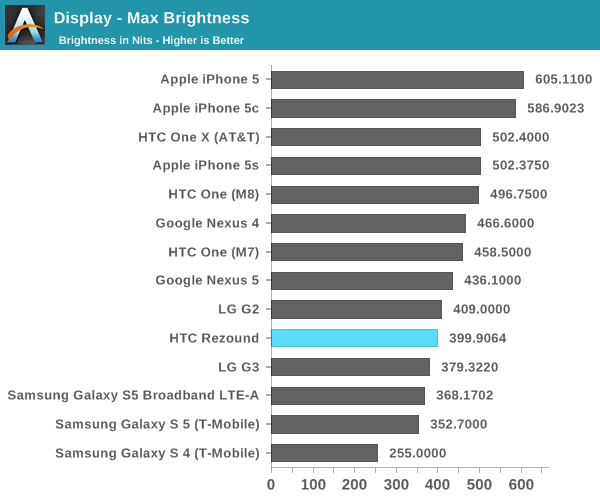
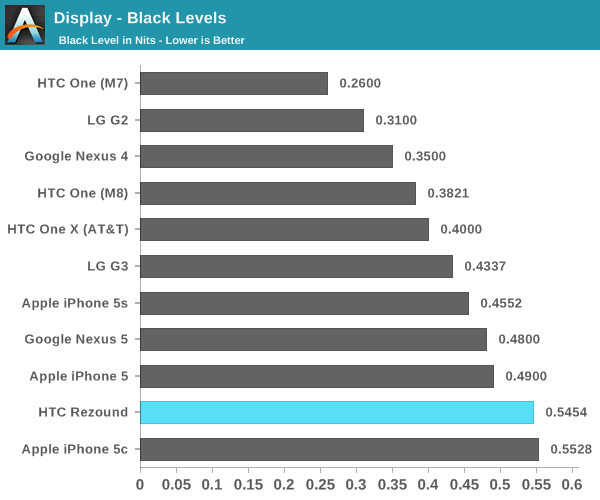
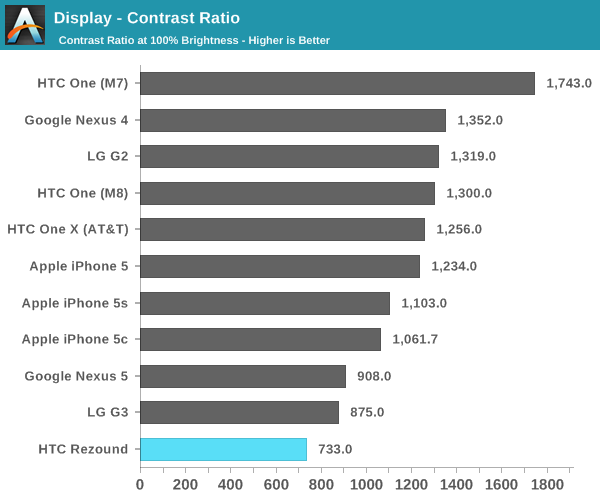
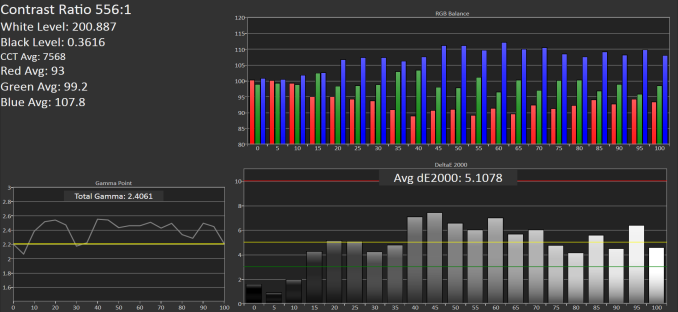
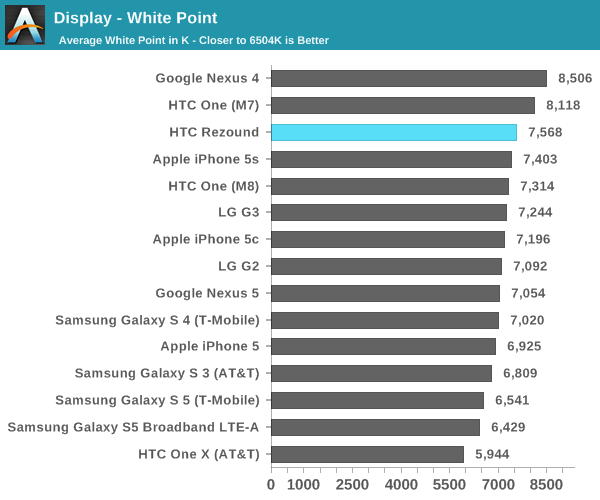

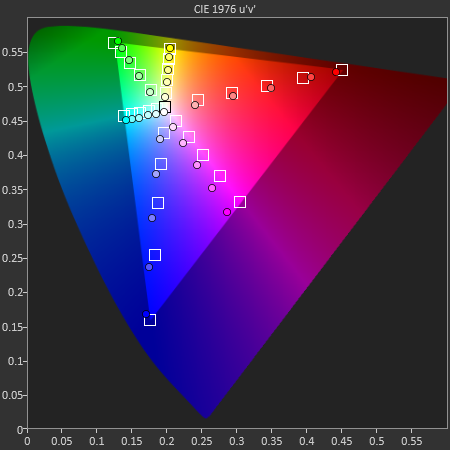
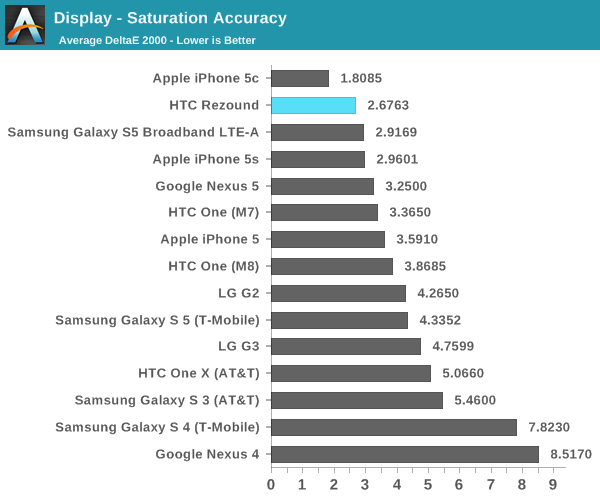

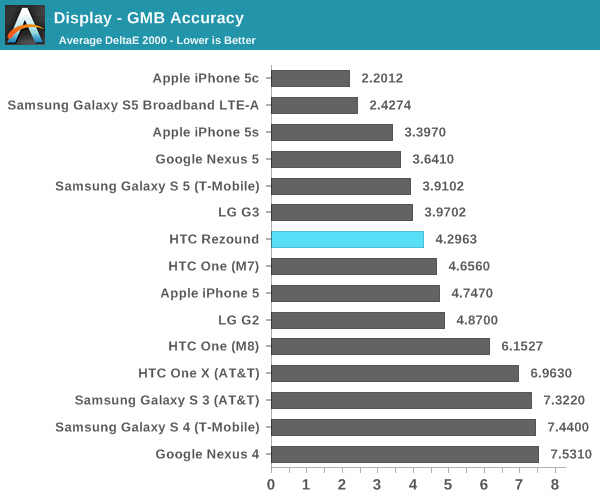








72 Comments
View All Comments
name99 - Saturday, July 26, 2014 - link
This is a silly statement. As I said, the 4 feels substantially slower than the 5. WiFi is not nearly as fast as I'd like. Hell, the 4 doesn't even have LTE. The fingerprint recognition in the 5S works very well for me. I suspect there is a grand future ahead of the sensor core that is the M7 chip.etc etc etc
Streamlined - Saturday, July 26, 2014 - link
He meant the display was pretty much all sorted out on the iphone 4.name99 - Saturday, July 26, 2014 - link
Fair enough. But I'm not sure it's correct.Contrast is still a problem for all iOS devices. Obviously OLED solves that, but (so far) at the expense of greater power usage (unless you try very hard to use black everywhere) and, apparently, the screen degrading over time.
Beyond that there are the invisible improvements that are possible (most notably the power saving business where you only communicate with the screen when the image changes, not routinely every 60th of a second).
Also I expect that, at SOME point, someone will add in a fourth phosphor so as to give us a wider gamut than what we have today.
But yeah, with retina we solved the problems that were so obvious they were visible to anyone with even slight technical background. The remaining improvements are all much more subtle. (Unless, of course, someone comes up with a 3D screen that's both actually useful and doesn't suck to look at!)
mkozakewich - Sunday, July 27, 2014 - link
The iPhone 4's screen was still greyish. The iPhone 4S looks mostly good, but was a fairly standard display. It was the iPhone 5 that gave us nearly the full sRGB gamut, and the 5S just improved on that.tipoo - Monday, July 28, 2014 - link
While that's true in retrospect, the 4 was possibly comparably the furthest ahead of the competition when it launched.akdj - Friday, August 8, 2014 - link
Yep. The '4' was a game changer. And it's only gotten better. Along with the iPad 3-->4 with the HiDPI display and the guts to run it. The iPhone 4 was a grand slam. I love my 5s as my personal and Note3 as my business line. Doesn't matter which I'm looking at. SP3, rMBP an iPhone 5s or the latest Super AMOLED. Today's HiDPI movement ...including in the living room with 4k, IMHO it's a significantly better 'leap' forward than the CES 12-13 3D craze. Good riddancemkozakewich - Sunday, July 27, 2014 - link
There have been reports on those screens. I'm not sure about iPhone 3G, but 3GS had a screen with fairly good viewing angles but had a horrible washed-out look. iPhone 4 had better colour and contrast, but was still greyish 4S was pretty good, sort of par for the course at the time, when compared to other screens. It was the iPhone 5 that really brought the "Full sRGB coverage!" and the 5s only improved on that a little. Like, 100% coverage instead of 98%.Fujikoma - Saturday, July 26, 2014 - link
It would have been interesting to see how displays, that were tested during 2010-2012, would compare to the same tests being run on them after 2-4 years of use. To see how time affects brightness and such. I would think that there would be a usage metering device to measure against, to compare multiple units of the more popular of phones.jabber - Saturday, July 26, 2014 - link
Yeah the Nexus 4 screen is pretty washed out at times but I do prefer it to the overblown Samsung types. I see folks coming up with screen profiles for their rooted Nexus 4's that make the icons and UI look great but then you look at a picture of a human face and they look like they have severe radiation burns.That's the acid test really for any profile...flesh tones.I don't know why contrast/saturation etc. has to be locked out of a standard phone setup. Why can't it be access without having to root it?
mkozakewich - Sunday, July 27, 2014 - link
You can put it into movie mode, and that should change it to an sRGB standard across the whole phone. It all depends on taste.